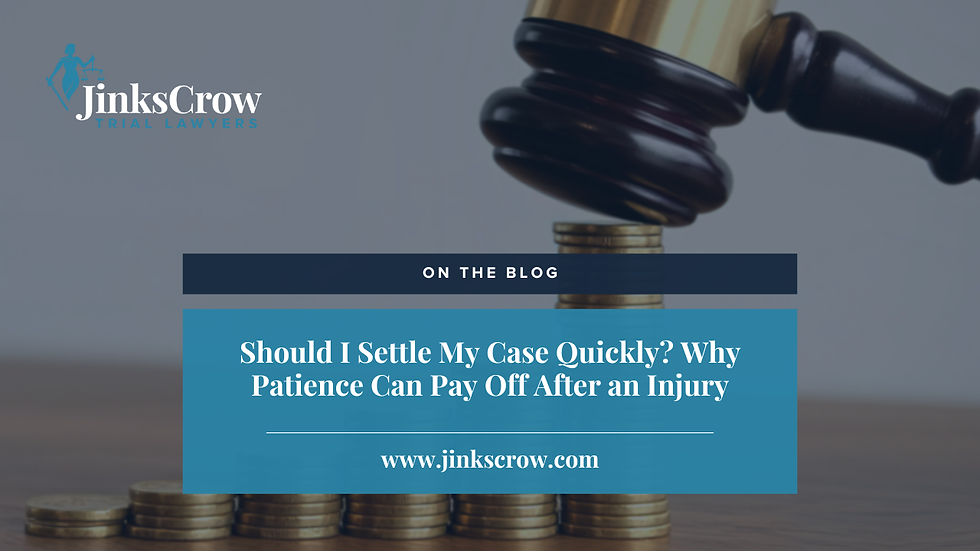What to Do if Product is Defective
- Jinks Crow

- Aug 16, 2022
- 2 min read

If you experience a defective product, there are certain steps you should take to preserve any claim you may have as a result. Below are steps on what to do if product is defective:
1. First, call a defective product attorney at Jinks, Crow & Dickson as soon as possible.
Having an experienced defective product attorney engaged at the very beginning can help ensure your potential claim is preserved and documented appropriately. Doing so can make a big difference on the value of the claim and even whether there is a claim at all. We can guide you at every step of the process from preserving evidence to obtaining the appropriate medical care to putting the proper parties on notice.
2. Make sure the defective product is not altered in any way.
Preserving the evidence is necessary to pursue a product liability claim for a defective product. If possible, simply leave it alone where it is. If the situation requires it to be moved, have someone take photographs of the product before it is moved. LOTS of photographs – from every possible angle and perhaps including references in the photograph to help depict the location of the product in relation to its surroundings. Get close-ups and distant shots. Video is helpful, as well. If using video, be mindful of the sound and any talking in the background. Some audio might be helpful in explaining what is seen; other irrelevant comments might not be. If the product is moved, make sure that it is done carefully and relocated somewhere where it won’t be subject to tampering. Your attorney should have a storage facility where the product can be safely secured.
3. Document all injuries caused by the defective product.
Photos, videos, and other documentation can be very helpful later. Keep copies of all documents and bills relating to emergency transportation and treatment. Get the names of all healthcare providers – EMTs, doctors, nurses, etc. Keep a diary or chronology of pertinent medical events – when the event happened, when arriving at the hospital, when seen by a physician, what treatments administered and when etc.
What not to do when experiencing a defective product can be just as important as what you should do. Don’t sign any documents which purport to explain what happened, who is responsible, or which contain any sort of release language.
Don’t assume what happened or who may be at fault. Often, the responsibility for a defective product or even whether there is a defective product is not immediately apparent. For example, the injuries experienced in a car wreck might appear to be the result of the person who caused the accident. In reality, the injuries may be due to a defective design of the vehicle itself.
%20Proof%20%235.png)








Comments